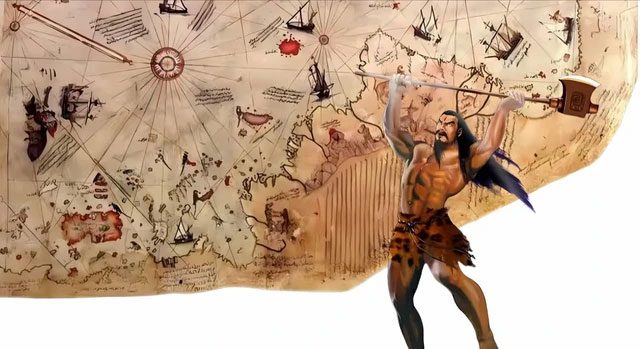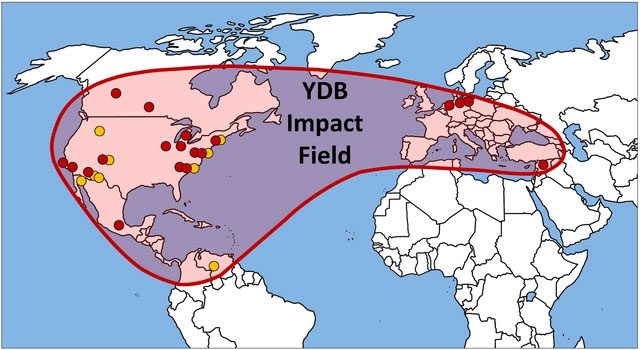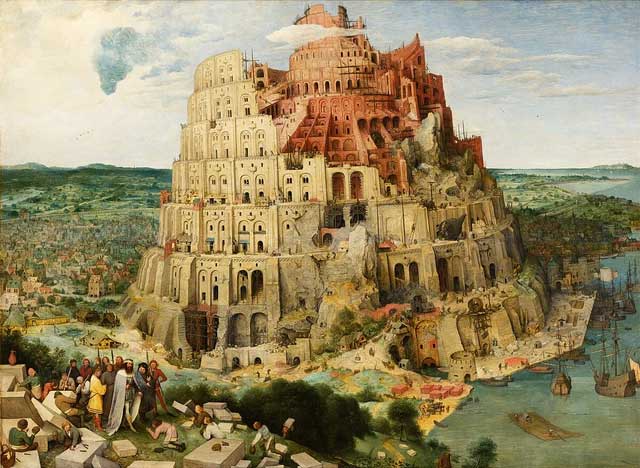The legend of the Great Flood, found in many cultures around the world, recounts the catastrophic flood that destroyed all previous civilizations. But is it merely a myth, or does it have roots in real geological upheavals?
On the global mythological map, it is not difficult to encounter stories about the Great Flood – a disaster that annihilated world civilizations. This legend appears in most cultures, linked to a massive flood that swept away all traces of previous life. But is this merely a fanciful tale, or did it actually occur?
In reality, the subject of the Great Flood has become a hot topic in many online discussion forums. According to several popular theories, the development of human civilization is always associated with major rivers. When these rivers overflow, the event tends to leave a strong imprint in human memory. This explains why many cultures have transmitted stories of floods as part of their legendary history.

The story of the Great Flood appears in many myths around the world.
However, not everywhere has stories of catastrophic floods. For instance, the Nile River – the lifeblood of ancient Egyptian civilization – flooded many times but left no legend of a Great Flood in their mythology. In Egyptian mythology, the world initially was just a sphere of water with no land, and from a mysterious hill that rose from the waters, their creator god emerged. This raises the question: is there any connection between flood myths and creation?
When studying ancient maps and changes in sea levels during the Ice Age, researchers have discovered a peculiar connection between mythology and reality.
When examining a map of the world 20,000 years ago, at the height of the Ice Age, a new image of the continents on our planet gradually emerges. At that time, the Earth’s average temperature was about 6°C lower than it is today. Sea water had frozen on land, causing sea levels to be about 120 meters lower than today. This map reveals the presence of continental shelves that were once exposed, including the famous Bering Land Bridge and a supercontinent in Southeast Asia known as Sundaland. Many scholars believe that Sundaland could be the legendary continent of Atlantis that vanished over time.

Map of the world 20,000 years ago.
In the following 20,000 years, the melting of glaciers caused sea levels to rise, altering the shape of the Earth’s continents. Comparing this map with maps from mythology reveals surprising changes – stories of global flood disasters might not just be legends but could have grounding in actual geological changes.
About 13,000 years ago, the world experienced an event known as the Younger Dryas Event, during which global temperatures suddenly plummeted. This temporarily halted the rise in sea levels for about 1,000 years. If you were a witness to this event at that time, you might also believe it was the work of legendary gods, much like many flood stories passed down through millennia.

The Younger Dryas Event is a significant period in Earth’s geological history, occurring approximately 12,900 to 11,700 years ago. During this period, the global climate underwent a sudden and significant change: the Earth, which was warming after an Ice Age, suddenly became cold again.
Interestingly, when delving deeper into this map, researchers discovered a strange connection with the Chinese mythical text “Shan Hai Jing.” Notably, a mysterious area beyond the sea, described as the land of Shaohao, contains a deep, bottomless gorge where gods appeared. Memories of floods from mythology may reflect actual natural events when people had to migrate to higher lands.
It is worth pondering: if all the glaciers on Earth were to melt and sea levels rose by an additional 60 meters, would we be witnessing another scenario of the Great Flood in the future? Perhaps, the stories of floods and destruction are not just relics of the past but also warnings of what could happen if global climate change continues to escalate.

The Tower of Babel – where the languages of humanity were divided.
In addition to flood disasters, a series of other events frequently appear in global legends, such as the existence of colossal civilizations before modern humans emerged. Stories like The Tower of Babel, where the languages of humanity were divided, serve as classic examples of how myths connect with actual history.
Although they are merely hypotheses, the connections between mythology and actual geology may open a new door for us to understand the Earth’s past and its role in shaping ancient legends. The Great Flood may not only be a tale of the past but also a cautionary lesson for humanity’s future.


















































